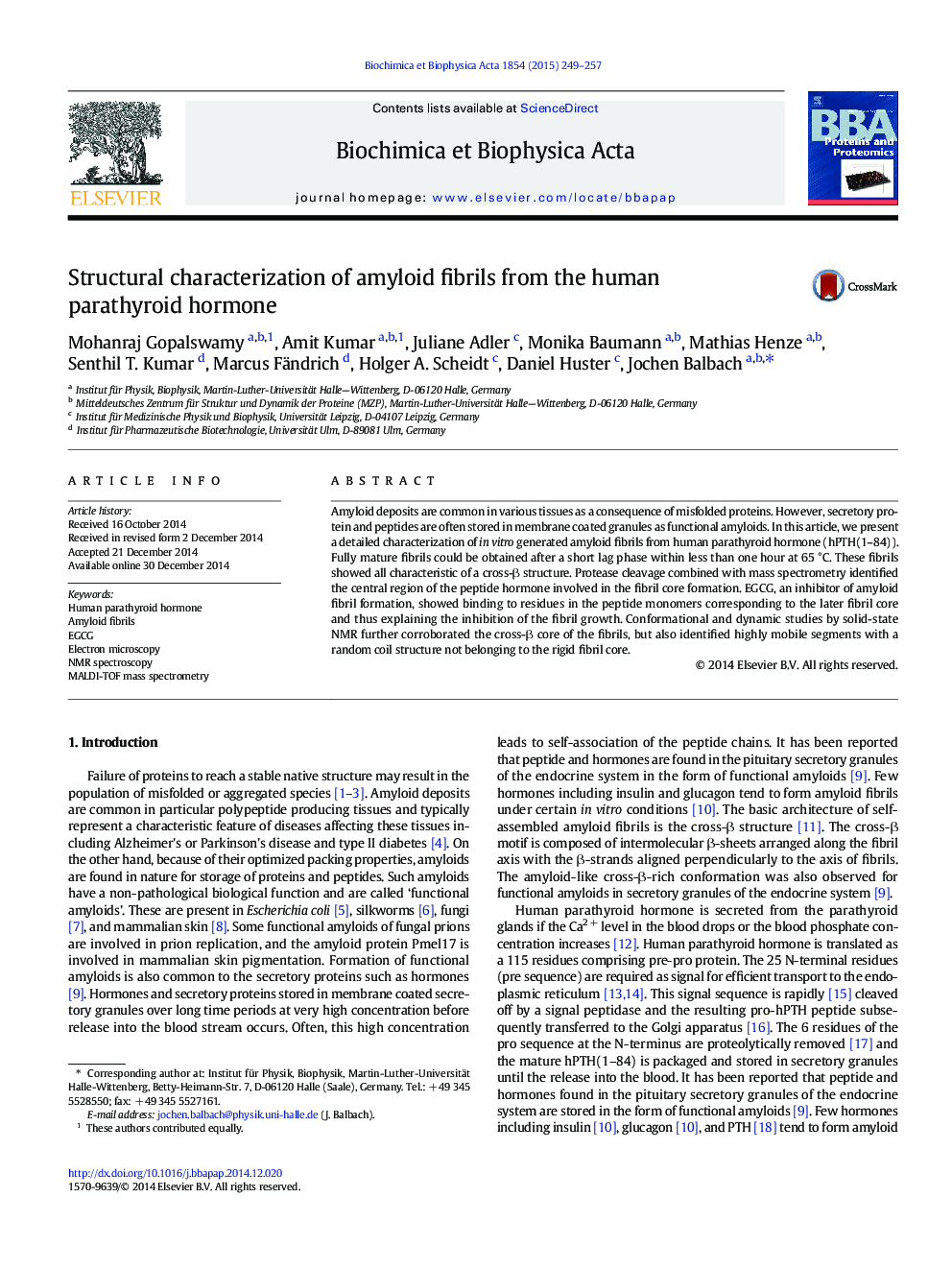| Article ID | Journal | Published Year | Pages | File Type |
|---|---|---|---|---|
| 10537092 | Biochimica et Biophysica Acta (BBA) - Proteins and Proteomics | 2015 | 9 Pages |
Abstract
Amyloid deposits are common in various tissues as a consequence of misfolded proteins. However, secretory protein and peptides are often stored in membrane coated granules as functional amyloids. In this article, we present a detailed characterization of in vitro generated amyloid fibrils from human parathyroid hormone (hPTH(1-84)). Fully mature fibrils could be obtained after a short lag phase within less than one hour at 65 °C. These fibrils showed all characteristic of a cross-β structure. Protease cleavage combined with mass spectrometry identified the central region of the peptide hormone involved in the fibril core formation. EGCG, an inhibitor of amyloid fibril formation, showed binding to residues in the peptide monomers corresponding to the later fibril core and thus explaining the inhibition of the fibril growth. Conformational and dynamic studies by solid-state NMR further corroborated the cross-β core of the fibrils, but also identified highly mobile segments with a random coil structure not belonging to the rigid fibril core.
Keywords
Related Topics
Physical Sciences and Engineering
Chemistry
Analytical Chemistry
Authors
Mohanraj Gopalswamy, Amit Kumar, Juliane Adler, Monika Baumann, Mathias Henze, Senthil T. Kumar, Marcus Fändrich, Holger A. Scheidt, Daniel Huster, Jochen Balbach,
